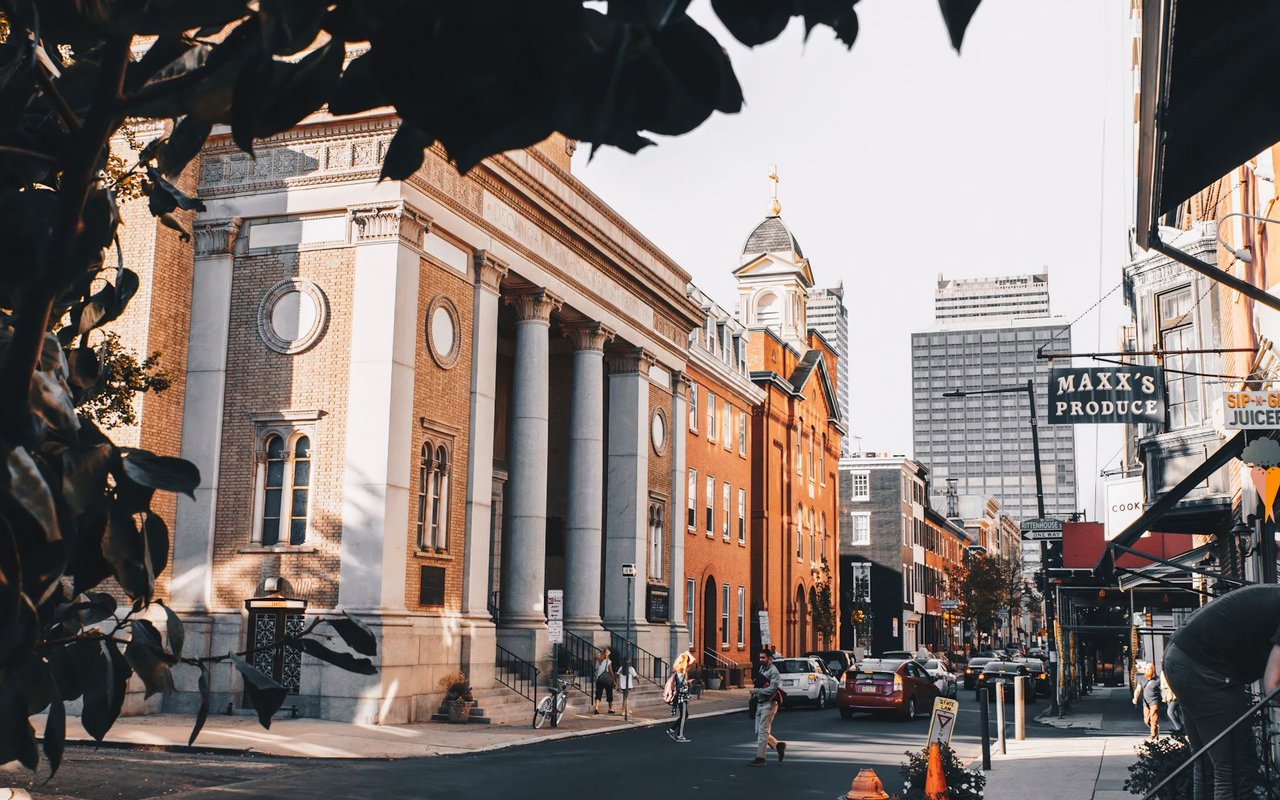Philadelphia, PA, is a city rich in history, with a diverse architectural heritage that spans centuries. As one of the oldest cities in the United States, Philadelphia has played a significant role in the nation's history, from the signing of the Declaration of Independence to its development as a major industrial center. This historical depth is reflected in the city's architecture, which showcases various styles and periods, from colonial-era buildings to modern skyscrapers. The city's landscape depicts America's evolution, featuring structures that have witnessed and shaped pivotal moments in history. This guide explores some of Philadelphia's most iconic architectural landmarks, highlighting the styles and historical significance that define Philadelphia, PA architecture.
1. Independence Hall
Independence Hall is the birthplace of the United States, where the Declaration of Independence and the U.S. Constitution were debated and adopted. Completed in 1753, this Georgian-style building is a UNESCO World Heritage Site. Its red brick façade, white trim, and iconic bell tower exemplify the colonial architecture that characterizes much of early Philadelphia, PA architecture.
Independence Hall's design is a straightforward example of Georgian architecture, which was popular in the American colonies during the 18th century. The building features a symmetrical layout with evenly spaced windows and a centered front door. The use of red brick with white wooden trim and classical elements such as pediments and columns give the building a dignified and orderly appearance. The interior of Independence Hall includes the Assembly Room, where the Second Continental Congress met and where the Declaration of Independence was signed. This room is restored to its original appearance and includes period furnishings that provide a glimpse into the 18th-century colonial government setting.
Independence Hall's design is a straightforward example of Georgian architecture, which was popular in the American colonies during the 18th century. The building features a symmetrical layout with evenly spaced windows and a centered front door. The use of red brick with white wooden trim and classical elements such as pediments and columns give the building a dignified and orderly appearance. The interior of Independence Hall includes the Assembly Room, where the Second Continental Congress met and where the Declaration of Independence was signed. This room is restored to its original appearance and includes period furnishings that provide a glimpse into the 18th-century colonial government setting.
2. Philadelphia City Hall
Philadelphia City Hall, an example of the Second Empire style, dominates the city center. Completed in 1901, it was the tallest habitable building in the world at the time. Designed by John McArthur Jr., the building features elaborate masonry, a clock tower topped with a statue of William Penn, and an intricate façade adorned with sculptures. It remains one of the most striking examples of 19th-century Philadelphia, PA architecture.
The Second Empire architectural style of City Hall is characterized by its exquisite and eclectic design elements, which include mansard roofs, elaborate ornamentation, and a symmetrical layout. City Hall's exterior is constructed from white marble, limestone, and granite, giving it a robust and imposing presence. The building covers an entire city block, with a footprint of over 14 acres, making it one of the most significant municipal buildings in the United States.
The Second Empire architectural style of City Hall is characterized by its exquisite and eclectic design elements, which include mansard roofs, elaborate ornamentation, and a symmetrical layout. City Hall's exterior is constructed from white marble, limestone, and granite, giving it a robust and imposing presence. The building covers an entire city block, with a footprint of over 14 acres, making it one of the most significant municipal buildings in the United States.
3. The Philadelphia Museum of Art
The Philadelphia Museum of Art is renowned not only for its extensive art collection but also for its neoclassical architecture. Designed by Horace Trumbauer, Julian Abele, and the Zantzinger, Borie & Medary architectural firm, the museum was completed in 1928. The building's grand columns, pediment, and iconic "Rocky Steps" leading up to its entrance symbolize the city's cultural and architectural heritage.
4. Eastern State Penitentiary
Eastern State Penitentiary, operational from 1829 to 1971, is a prime example of Gothic Revival architecture. Designed by John Haviland, the prison's imposing stone walls, castle-like towers, and arched windows were intended to inspire repentance and reform. This architectural approach was revolutionary at the time and marked a significant departure from the more rudimentary and punitive designs of earlier prisons.
The penitentiary was one of the first institutions to implement the "Pennsylvania system" of incarceration, which emphasized solitary confinement and moral reform. The architectural layout was integral to this system, featuring a radial plan with cellblocks extending from a central hub, resembling the spokes of a wheel. This design allowed for efficient surveillance from a central location, enabling guards to observe multiple cellblocks simultaneously. Each prisoner was housed in a separate cell, which included a small exercise yard to minimize contact with other inmates, reinforcing the principles of isolation and reflection.
The penitentiary was one of the first institutions to implement the "Pennsylvania system" of incarceration, which emphasized solitary confinement and moral reform. The architectural layout was integral to this system, featuring a radial plan with cellblocks extending from a central hub, resembling the spokes of a wheel. This design allowed for efficient surveillance from a central location, enabling guards to observe multiple cellblocks simultaneously. Each prisoner was housed in a separate cell, which included a small exercise yard to minimize contact with other inmates, reinforcing the principles of isolation and reflection.
5. The Franklin Institute
The Franklin Institute, named after Benjamin Franklin, is one of the oldest and most esteemed centers of science education and development in the United States. Completed in 1934, its architectural design embodies the principles of the Greek Revival style, a popular architectural movement that emerged in the early 19th century and sought to evoke the grandeur and democracy of ancient Greek civilization.
Grand columns and a portico, typical features of Greek Revival architecture, characterize the exterior of The Franklin Institute. These elements impart a sense of classical elegance and symbolize the institute's commitment to knowledge, enlightenment, and public education. The use of marble in the building's interiors further enhances its classical aesthetic, creating a sense of permanence and intellectual sophistication.
Grand columns and a portico, typical features of Greek Revival architecture, characterize the exterior of The Franklin Institute. These elements impart a sense of classical elegance and symbolize the institute's commitment to knowledge, enlightenment, and public education. The use of marble in the building's interiors further enhances its classical aesthetic, creating a sense of permanence and intellectual sophistication.
6. The Academy of Music
The Academy of Music, known as the "Grand Old Lady of Locust Street," is one of the oldest opera houses in the United States, and it is still used for its original purpose. Designed by architect Napoleon LeBrun and completed in 1857, it features a beautiful Italianate exterior and an opulent interior with a crystal chandelier and lavish decorations. The building is a testament to the city's rich artistic history and appreciation for the performing arts.
Discovering Philadelphia's Architectural Gems:
Philadelphia, PA, is a city where history and modernity coexist harmoniously, creating a wide range of architectural styles. From colonial-era landmarks to modern structures, the city's buildings tell the story of America's architectural evolution. Exploring these landmarks offers a deeper understanding of Philadelphia, PA, architecture and the cultural and historical significance embedded in its streets and structures. Whether you're a history buff, an architecture enthusiast, or simply a curious traveler, the architectural landmarks of Philadelphia promise a fascinating journey through time and design.
Looking to buy or sell a home in Philadelphia? Consider Caspi • Pouget Advisory for expert guidance. With a deep understanding of the Philadelphia real estate market, they offer tailored strategies to maximize your investment. Whether entering the market or looking to optimize your property sale, Caspi • Pouget Advisory provides the expertise to help you achieve your real estate goals. Contact them today to get started on your path to buying or selling a home in Philadelphia.
Looking to buy or sell a home in Philadelphia? Consider Caspi • Pouget Advisory for expert guidance. With a deep understanding of the Philadelphia real estate market, they offer tailored strategies to maximize your investment. Whether entering the market or looking to optimize your property sale, Caspi • Pouget Advisory provides the expertise to help you achieve your real estate goals. Contact them today to get started on your path to buying or selling a home in Philadelphia.




